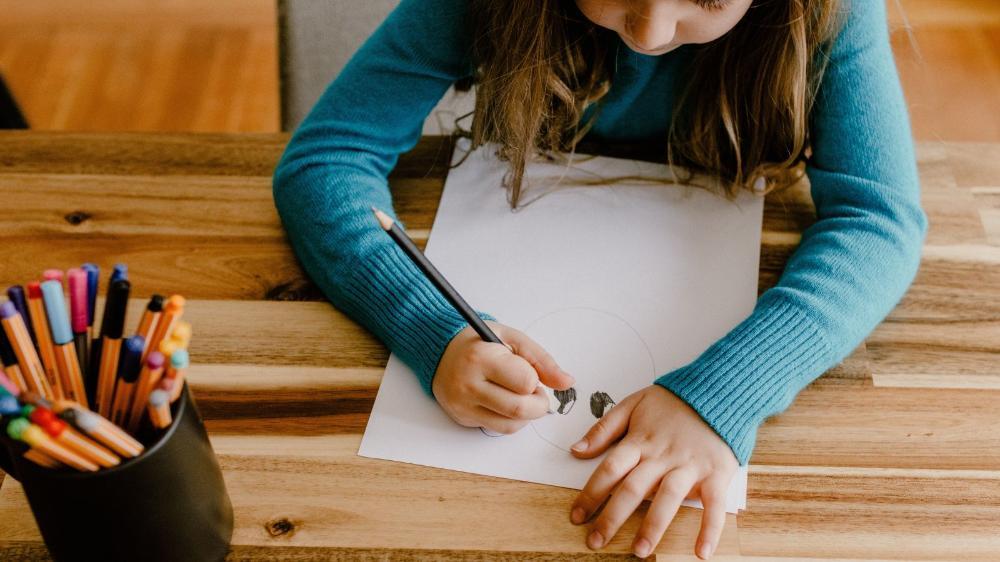June 24, 2022
Girls’ mental health has been affected more than boys’ during the pandemic
New research finds that school-aged girls’ mental wellbeing has been disproportionately affected by the COVID pandemic when compared with boys
Evidence has shown that the COVID pandemic has impacted women’s mental health more significantly than men’s mental health. For example, lockdowns and the stress of home schooling have been found to take a greater toll on working mothers compared with fathers, while women have been more likely to experience increases in loneliness over the past two years.
Now, our new research has found that school-aged girls’ mental wellbeing has also been disproportionately affected when compared with boys.
Establishing the presence of gender-specific effects of the pandemic on children’s wellbeing is important. While other studies found that the pandemic had negatively impacted children’s mental health in general, it was unclear whether the effects had been equally shared between boys and girls.
So this is what we aimed to find out in our study. We also wanted to explore the role of circumstances, such as socio-economic status, as potential buffers against these effects.
These research questions have important implications, because evidence shows children’s mental health issues can spill over to educational outcomes and longer-term wellbeing. So if the pandemic affects boys and girls differently, this may undermine society’s efforts to achieve gender equality from a young age.
What we did
We focused on the UK’s experience during the COVID pandemic. Children in the UK have been directly affected by the closures of schools and childcare facilities, which contributed to the decline in their mental wellbeing. School closures were compounded by a lack of social interaction during lockdowns, as well as increased stress within families, which can have a flow-on effect to children.
Using existing data on British families, surveyed before and during the COVID pandemic, we analysed changes in children’s mental wellbeing.
In our study, children’s mental wellbeing was measured by scores on what’s called the Strengths and Difficulties Questionnaire, a survey used to measure children’s emotional and behavioural difficulties. For example, it measures a child’s ability to pay attention, manage their behaviour and emotions and interact with their peers.
Parents completed the questionnaire for younger children, while older children completed the questionnaire by themselves. While children aged five and above are included in this data, our analysis mainly focused on older children (aged ten to 15), as we would expect their answers to measure their mental wellbeing more accurately. The final sample included more than 21,000 observations on over 11,000 children in this age group (some children were surveyed at multiple time points).
We compared boys’ and girls’ scores on the questionnaire before and during the pandemic. We compared children who came from similar backgrounds – for example, their parents were similarly aged, and they were of the same socio-economic background. This allowed us to be confident these characteristics were not driving the main findings. We then separately analysed the results for younger and older children.
Our main results showed that girls’ mental wellbeing during COVID declined more than boys’ mental wellbeing compared with before the pandemic. We observed a greater deterioration among girls compared with boys across most domains of the questionnaire.
For example, before the pandemic, there was no difference in emotional and behavioural difficulties by gender, as measured the total Strengths and Difficulties Questionnaire score. During the pandemic, emotional and behavioural difficulties increased among girls, but there was no change among boys.
The disparity between girls and boys was greater than the effect of other important socio-economic characteristics, such as parental education or age, on questionnaire scores. These results were particularly pronounced for older children (aged between ten and 15).
We also investigated gender differences in life satisfaction and found that girls experienced a larger increase in dissatisfaction with school, friends and appearance, compared with boys.
We observed these gender differences in pandemic effects on children’s mental wellbeing across all income groups, although they were more salient in lower-income families. This suggests that either income itself can act as a buffer, or simply that girls from higher-income families are somewhat protected from the pandemic effects.
Why might girls be worse off?
There are several potential explanations as to why girls’ mental wellbeing appears to have been more seriously affected during the COVID pandemic. For example, girls may have experienced more significant changes to their day-to-day lives during the pandemic, such as needing to help more with housework, childcare of younger siblings and seeing their friends less often for these reasons.
Another potential reason for the disparity is that face-to-face interactions with friends, which have been greatly reduced during the pandemic, could be more important to girls than boys.
It was beyond the scope of our study to explore possible reasons behind these trends, so further research will be needed to get a clearer picture.
Our findings suggest that it’s important to carefully analyse differences in pandemic effects across subgroups of individuals, including children, and support those more seriously affected with appropriate policies and interventions.
A first step in addressing the gendered impacts of the pandemic would be to raise awareness among parents, teachers and the wider community about the fact that girls may be more sensitive to the impacts of the pandemic.
Agne Suziedelyte, Senior lecturer in Economics, City, University of London; Anna Zhu, Senior lecturer in Economics, RMIT University, and Silvia Mendolia, Senior lecturer in Economics, University of Wollongong
This article is republished from The Conversation under a Creative Commons license. Read the original article.
UOW academics exercise academic freedom by providing expert commentary, opinion and analysis on a range of ongoing social issues and current affairs. This expert commentary reflects the views of those individual academics and does not necessarily reflect the views or policy positions of the University of Wollongong.
